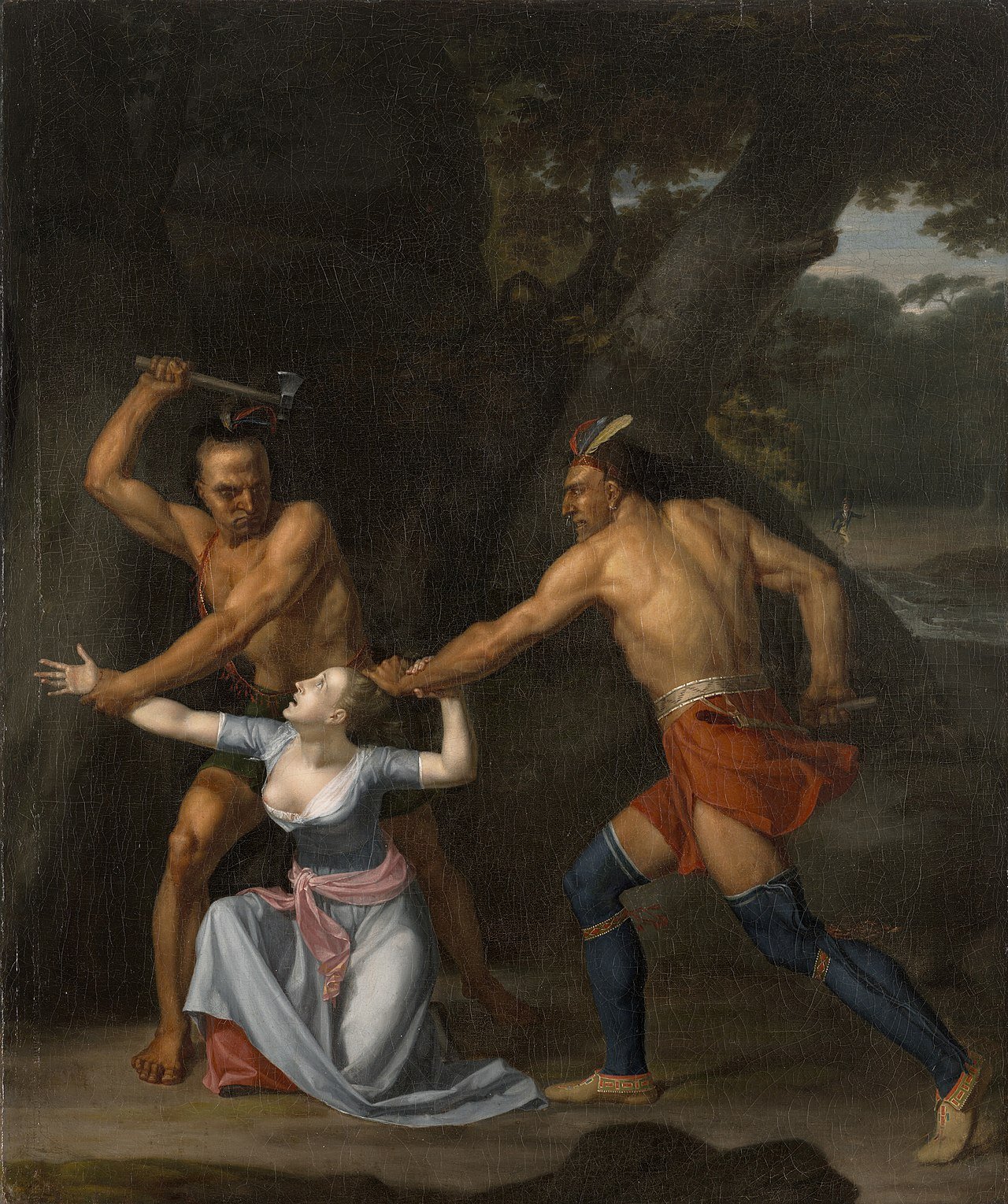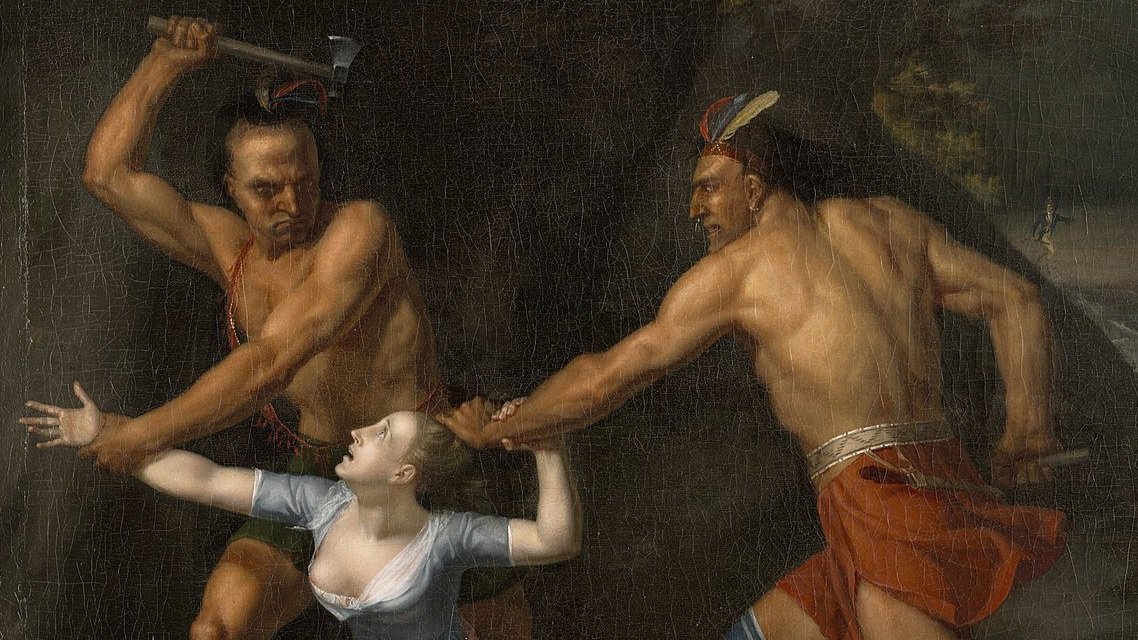John Vanderlyn’s Jane McCrea: Love, Death, and America
By Paul StaitI
John Vanderlyn, The Murder of Jane McCrea, 1804, Wadsworth Athenaeum, Hartford. (Image: Wikimedia Commons).
We are looking at John Vanderlyn’s startling 1804 painting The Murder of Jane McCrea, part of the American collection of the Wadsworth Athenaeum in Hartford. If, for a moment, we were to accept the picture as a magic portal to the American Revolution, and take what we are seeing as authentic and true, free from any political passion or personal bias, then the story of Jane McCrea’s violent death, according to Vanderlyn, would go something like this:
Dateline: Fort Edward, New York, July 26, 1777. At the beginning of the third year of the American Revolution, the British are rapidly advancing into the Northern Colonies. The army of Lieutenant-General John Burgoyne is nearing Fort Edward where a few of his Indian auxiliaries encounter a young woman. Twenty-five-year-old Jane McCrea has remained in the town rather than flee like most other citizens as she is about to get married to Lieutenant David Jones, a Loyalist fighting for the British.
In Vanderlyn’s reckoning, two of Burgoyne’s Native warriors take her out of Fort Edward to the edge of a forest and scalp her. where they push her to one knee. She is dressed her marriage, in a powder-blue wedding gown, now misshapen and leaving her exposed and debased. Lieutenant Jones, a tiny figure at the back of a clearing in Vanderlyn’s painting is too far away to affect a rescue. Muscled male bodies overpower soft female forms. Dark skinned hands squeeze ghost-white flesh. Death and dismemberment are imminent.
To be sure, there is a kernel of historical truth to the picture. At least two, but maybe as many as six of the warriors had been sent to retrieve McCrea from behind the American lines so that she might rendezvous with her fiancé. The plan went terribly wrong, and McCrea ended up scalped and dead.
Vanderlyn’s searing image possesses so much power that it lingers in the mind like no written account possibly can. If we take a presentist view - assessing the painting according to today’s values - then it tells a familiar, indeed predictable, American tale, in which a white damsel in distress is mauled by Indians who are cast as irredeemable savages incapable of civil decency. It does not take much effort to see the stereotypes in Vanderlyn’s picture. We might ask, where, exactly, are the equivalent images of the crimes committed by American raiding parties, such as the Sullivan expedition of 1779, which swept through New York, burning Iroquois villages, destroying crops, summarily killing men, and pointedly abusing women?
We could leave it at that. On the other hand, we could be historicist, and try to see what the picture meant to Vanderlyn and to its viewers two centuries ago. To do that, we need to understand that Jane McCrea was not just another case of collateral damage during the Revolution. Widespread press coverage and a public relations campaign hatched by the American General Horatio Gates turned her into the great female cause célèbre of the Revolution.
Read Professor Paul Staiti’s full article here.
Paul Staiti is an Alumnae Foundation Professor of the Fine Arts at Mount Holyoke College. His forthcoming book is The Killing of Jane McCrea: Love, Death, and the American Revolution.
(October 2023)


